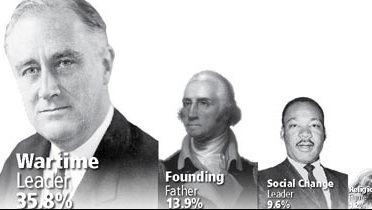On Wednesday I wrote about the emerging generation of young “Millennial” leaders who are poised to shape American politics and society much like the Baby Boomers did before them.
In our efforts to understand the future we asked them about everything from how often they texted and tweeted (79 times a day on average last year!) to which leaders and companies they admire (President Obama and Apple, not oil companies and Sarah Palin) to which countries they think will run the world in 2025 (the U.S. didn’t fare so well vs. their views of China). But in the shaping of these youths’ views on current events, where are they getting their news from? The results were interesting, and quite contrary to what is often portrayed about the next generation’s news sources.
We asked the pool of over 1,000 young American leaders from around the country to rank the primary source from which they get their news on current events. The options they had to rank were:
- Newspapers/magazines
- Website of news organizations (cnn.com, ap.com, etc.)
- Blogs (internet discussion boards/social networking tools)
- Major network evening news (ABC, CBS, NBC, PBS)
- Cable news (Fox, CNN, MSNBC, etc.)
- Discussions with friends/family
- School
- Comedy shows (The Daily Show, Tonight Show, etc.).
Their responses point to a more discerning group of news consumers than perhaps is popularly perceived. Despite the array of new technologies that enable the near instantaneous sharing of information across previously unimagined distances and from any number of connected sources, these young leaders still look to traditional news organizations as their sources for what is going on in the world. The difference is that the medium is shifting.
News organization websites (25%) came in at first place in their rankings, followed by cable news (20%), and then newspapers/magazines (15%). The central role major network evening news shows once had seems to be passing, actually coming in fifth (11%), even behind friends and family (12%). At the bottom were school, comedy shows and blogs (each with 6%). Interestingly, 37% and 34% of the youth ranked blogs and comedy shows as their very last sources of information on current events, meaning that the sources usually cited in the media are actually those that the youth ranked least important.
When we broke the data down by partisanship, an interesting pattern emerged. Young leaders who identified themselves as Democrats or Independents were more likely to choose news organization websites, while a slightly higher number of young Republicans (30%) chose cable news as their first choice source of information. By contrast, a far greater number of young Republicans (42%) than Democrats (28%) listed comedy shows as their very last choice of news source.
Again, it is important to note that the over 1,000 young Americans who answered these questions were drawn from a pool of youth who have already evidenced leadership skills as determined by their peers, as well as an early interest in politics and policy. But the hard data show that at least for them, the common assumptions on where they are getting their news may be wrong. The next generation of American leaders may be moving away from the evening network news and newspapers that past generations looked to, but they are not turning to whom we are often told. Instead, when it comes to where the leaders of tomorrow get their news, Katie Couric and the Graham family, as well as Jon Stewart and Facebook buddies, have nothing on the online editors and producers of CNN.com and Fox News.
These data are further discussed in the report, “D.C.’s New Guard: What Does the Next Generation of American Leaders Think?” by Peter W. Singer, Heather L. Messera, and Brendan Orino.
The Brookings Institution is committed to quality, independence, and impact.
We are supported by a diverse array of funders. In line with our values and policies, each Brookings publication represents the sole views of its author(s).










Commentary
Where Today’s Youth Actually Get Their News
February 25, 2011